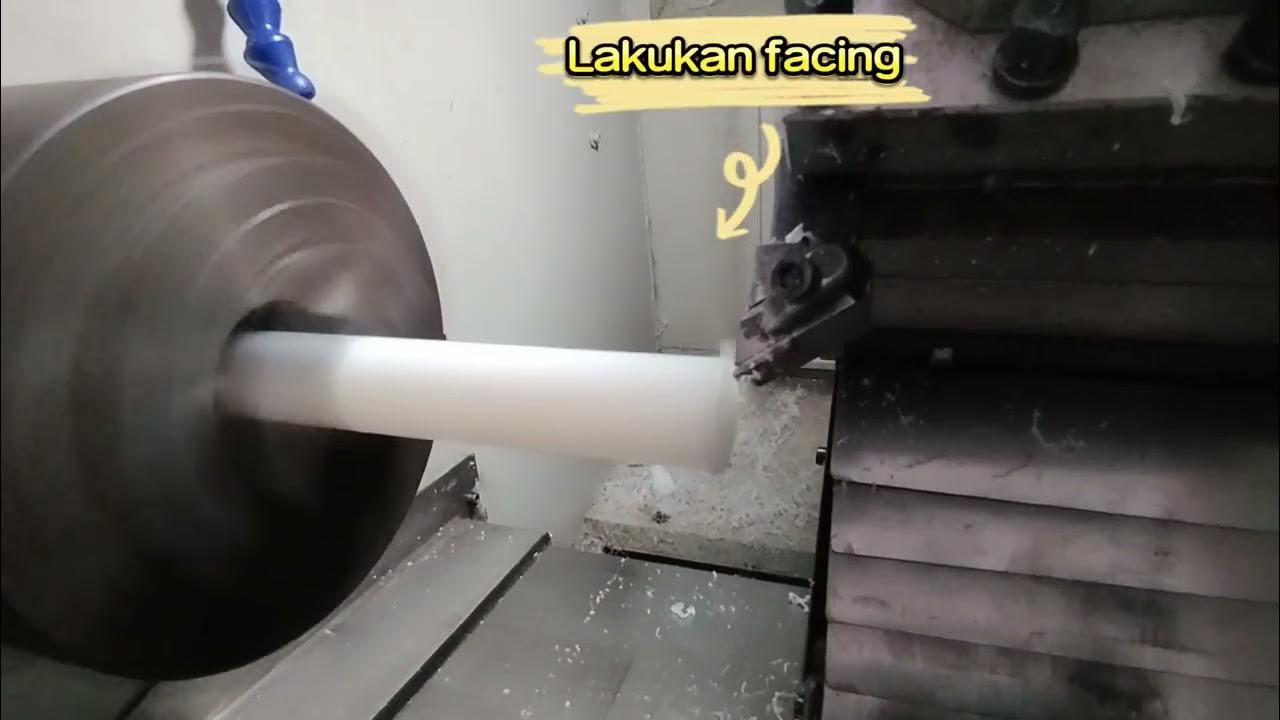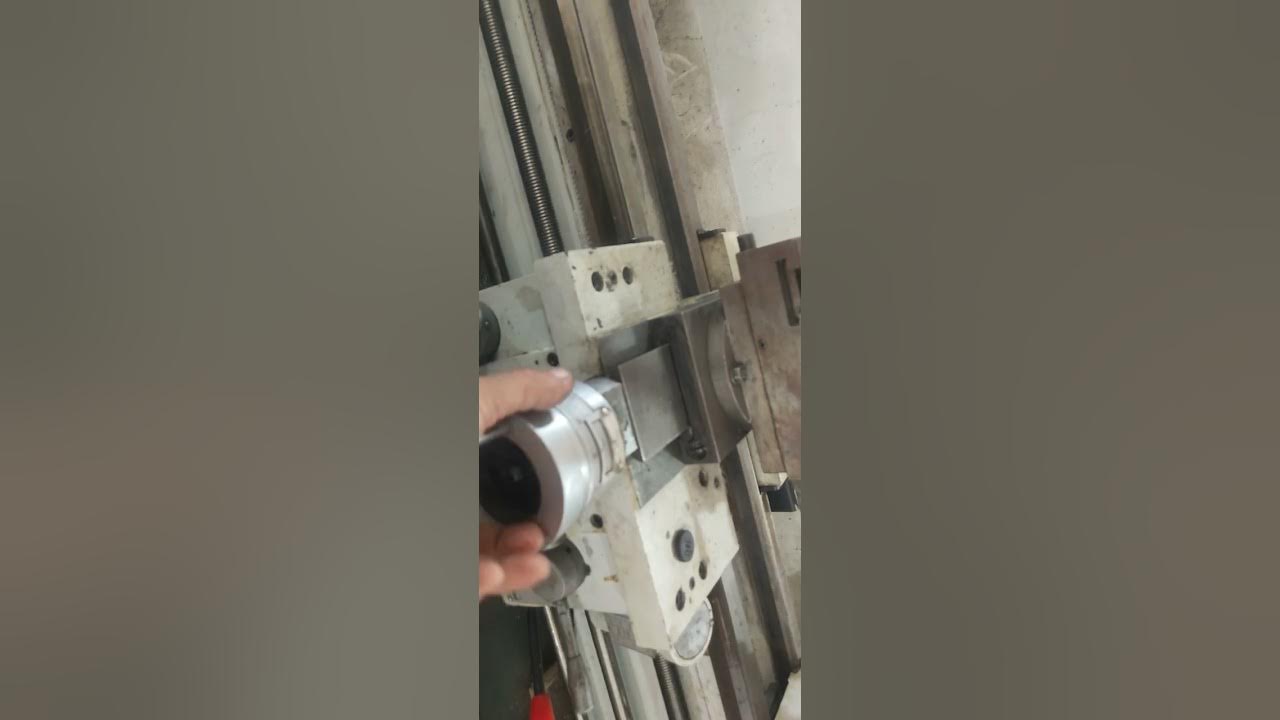Tutorial Mesin Bubut - Pembuatan Lubang / Pengeboran
Summary
TLDRThis video provides a detailed guide on how to operate a lathe machine for drilling processes. It covers the tools needed, such as a chuck, center drill, and cutting tools, along with step-by-step instructions for setting up the machine, ensuring precise hole drilling. The tutorial explains how to adjust the speed, how to measure the depth of the drill, and techniques for smoothing the edges of the hole. Emphasis is placed on safety measures, including using protective eyewear and ensuring the machine's rotation is correct. The process is done gradually and carefully to achieve optimal results and maintain machine longevity.
Takeaways
- 😀 Ensure the correct tools and accessories are prepared before starting the drilling process, such as the chuck, arbor, and various types of drill bits.
- 😀 Start the drilling process with a center drill to mark the exact center point of the hole, ensuring accurate drilling.
- 😀 The center drill should be securely tightened and selected based on the required size and material being worked with.
- 😀 Always check and adjust the machine's RPM (revolutions per minute) according to the material's properties to avoid damaging the tools or workpiece.
- 😀 When setting the RPM, make sure the calculation is correct to prevent the drill bit from breaking or damaging the workpiece.
- 😀 Before starting drilling, ensure the workpiece is clamped properly to avoid vibrations and movement during the process.
- 😀 Make sure the surface of the workpiece is flat and level to prevent the drill bit from breaking due to uneven pressure.
- 😀 Use appropriate cutting fluids to reduce heat and friction during drilling, preventing the drill bit from overheating.
- 😀 Drilling should be done in a slow, back-and-forth motion to help remove chips and debris from the hole, avoiding clogging.
- 😀 After drilling, use a chamfer tool to smooth the edges of the hole, ensuring there are no sharp edges left behind from the drilling process.
- 😀 Regularly clean the machine and tools after use to ensure their longevity and to maintain optimal performance for future tasks.
Q & A
What tools are necessary for the drilling process using a lathe machine?
-The essential tools for the drilling process using a lathe machine include a chuck, arbor, center drill, regular drill bits, a clamp to secure the workpiece, and a chamfering tool for finishing the hole edges.
What is the purpose of using a center drill in the drilling process?
-The center drill is used to mark the starting point of the drilling, ensuring that the hole is aligned properly and does not deviate during drilling.
Why is it important to secure the workpiece tightly in the lathe machine?
-Securing the workpiece tightly is important to prevent vibration or movement during drilling, which can result in inaccurate drilling and potential damage to the machine or workpiece.
What is the significance of using a chamfering tool after drilling?
-The chamfering tool is used to smooth out the edges of the hole, preventing sharp or jagged edges that could be dangerous or unsuitable for further machining.
How do you determine the correct RPM for the lathe machine during drilling?
-The correct RPM is determined using the formula n = (1000 × S) / D, where S is the cutting speed in meters per minute (which depends on the material being drilled) and D is the diameter of the tool. This ensures optimal drilling performance without damaging the drill or material.
What should you do if the correct RPM setting is not available on the machine?
-If the exact RPM setting is not available, choose the closest available setting, ensuring it is within an acceptable range to avoid damage to the tool or workpiece.
Why is it important to maintain the correct direction of rotation during drilling?
-Maintaining the correct direction of rotation (clockwise) is crucial to prevent the drill bit from breaking or malfunctioning, as reverse rotation can cause excessive wear or failure.
What are the three ways to measure the depth of a drilled hole?
-The depth of a drilled hole can be measured by marking the drill bit, using a caliper with a Vernier scale, or using a scale on the lathe machine itself for direct measurement.
How can the cooling process help during drilling with a lathe machine?
-Using coolant or lubricants during the drilling process helps prevent the drill bit from overheating, reduces friction, and prolongs the life of both the tool and the workpiece.
What precautions should be taken when drilling with a lathe machine to avoid damage?
-Precautions include ensuring the workpiece is properly secured, using the correct drill size, operating at the correct RPM, and avoiding excessive force or incorrect machine settings, which can cause tool breakage or poor hole quality.
Outlines

هذا القسم متوفر فقط للمشتركين. يرجى الترقية للوصول إلى هذه الميزة.
قم بالترقية الآنMindmap

هذا القسم متوفر فقط للمشتركين. يرجى الترقية للوصول إلى هذه الميزة.
قم بالترقية الآنKeywords

هذا القسم متوفر فقط للمشتركين. يرجى الترقية للوصول إلى هذه الميزة.
قم بالترقية الآنHighlights

هذا القسم متوفر فقط للمشتركين. يرجى الترقية للوصول إلى هذه الميزة.
قم بالترقية الآنTranscripts

هذا القسم متوفر فقط للمشتركين. يرجى الترقية للوصول إلى هذه الميزة.
قم بالترقية الآن5.0 / 5 (0 votes)






